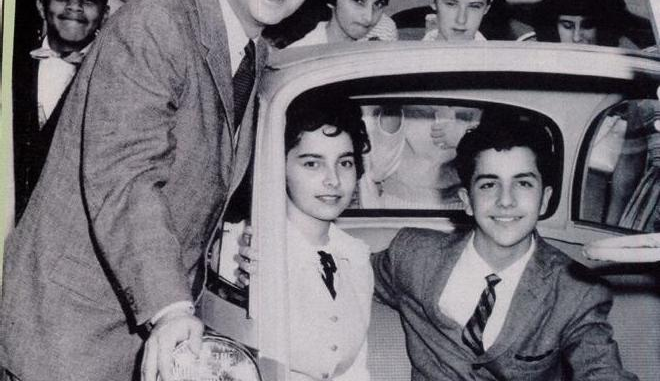
When we think of The Twist, most of us remember the beat, the freedom, and the fun. But behind the popularity of that dance—and so many others—were the faces we saw every week on American Bandstand: the regular teen dancers.
They weren’t celebrities, but to millions of viewers, they felt like stars. Week after week, these teens showed up on our black-and-white TV screens, ready to dance, laugh, and set the tone for what was cool. And when Chubby Checker stepped onto the stage and introduced The Twist, it was these young dancers who helped bring the magic to life.
They didn’t just copy the moves—they made them real. They made them ours.

The Twist, as a dance, was unlike anything before it. There were no formal steps, no rules about who led and who followed. It was loose, fun, and full of movement—and it needed young, energetic people to show the world how it was done. That’s where the Bandstand regulars came in.
When Justine Carrelli and Bob Clayton took the floor, they had a rhythm that felt effortless. Their chemistry, already beloved by viewers, made every dance look like a scene from a teenage dream. Watching Justine twist to Chubby Checker’s beat wasn’t just entertaining—it was instructional. Teenagers across America saw her and thought, “I can do that.” And they did.

Arlene Sullivan, with her calm grace and iconic hairstyle, made The Twist look smooth and classy. She was the kind of dancer who didn’t need flash to stand out—her presence said it all. Beside her, Kenny Rossi had the kind of energy that made people want to get up and move. His Twist was playful, full of bouncing shoulders and quick footwork. Together, they didn’t just follow the music—they danced with a kind of natural joy that made everyone at home want to try.
And try we did.
In living rooms, basements, school gymnasiums, and backyards, teens mimicked what they saw on Bandstand. It wasn’t about being perfect—it was about belonging to the moment, and the regular dancers made that possible. They weren’t distant movie stars. They were real kids, with real personalities and dance moves that felt achievable.

What made the regulars so special wasn’t just how they danced—it was how they connected. Fans wrote letters. They recognized them on the street. Magazines like 16 and Teen featured them alongside pop singers. And yet, they remained teens like everyone else, just with a little more spotlight.
They wore what we wore. They smiled like we smiled. And when they danced, they looked like they were having the time of their lives. That honesty, that relatability, was what made Bandstand such a powerful influence—and The Twist such a phenomenon.
In many ways, those dancers were the first influencers. Long before social media or viral videos, they showed us what was new, what was next, and what was now.
The Twist became more than a dance because it had faces to go with the rhythm. Faces that appeared every week, that we trusted, admired, and maybe even copied in the mirror when no one was looking.

As time passed, other dances came and went. The Pony, the Mashed Potato, the Jerk. But there was something about the way The Twist hit—simple, catchy, freeing—that made it stand apart. And its staying power is thanks in part to the dancers who brought it into our homes with such ease.
Today, many of those regulars are older, living quiet lives far from the TV lights. But for a generation of Americans, they will always be dancing—twisting—in our memories. They didn’t just make The Twist famous.
They made us feel like we were part of it.